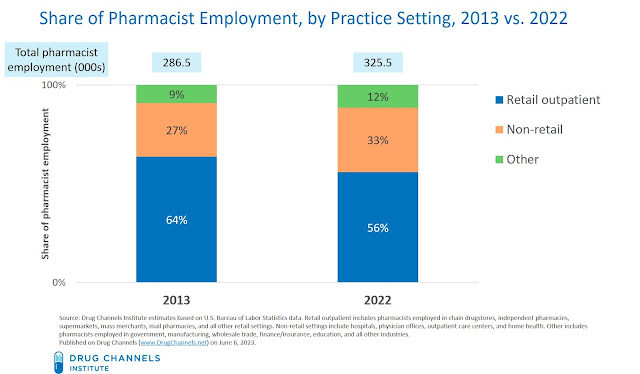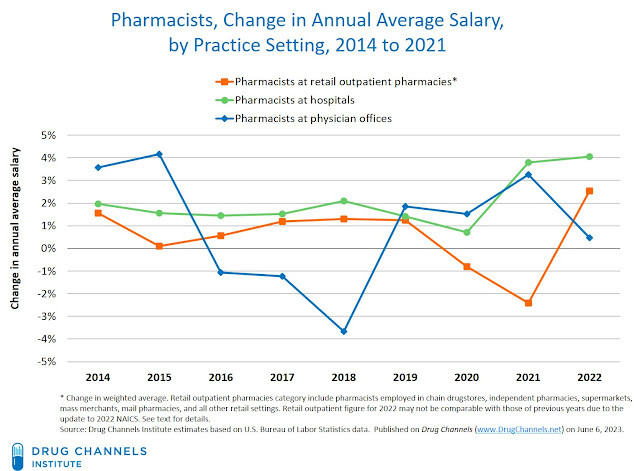Today’s guest post comes from Vishali Amin, Chief of Staff to the Office of the President and Senior Director of Customer Success at Kalderos.
Vishali discusses the persistent challenges of duplicate discounts between the 340B Drug Pricing Program and the Medicaid Drug Rebate Program. The Inflation Reduction Act of 2022 will further complicate duplicate discount issues.
To learn more, sign up now for priority access to Kalderos’ 2023 annual report: Mission Critical: Bringing Drug Discount Stakeholders Together so Patients Win. The 2023 report will be released on June 13, 2023.
Read on for Vishali’s insights.
The Drug Discount Ecosystem’s “Mission Critical”
By Vishali Amin, Chief of Staff to the Office of the President and Senior Director of Customer Success, Kalderos.
Drug discount programs like the 340B Drug Pricing Program and the Medicaid Drug Rebate Program play an essential role in expanding patient access to care. Over the past few years, these programs have expanded significantly, particularly 340B. In 2021, discounted drug purchases in 340B cost around $43.9 billion, up from just $5.3 billion in 2010.
This growth has led to increased scrutiny and controversy for 340B. Litigation between stakeholders has reached front-page news. Investigative reports in the New York Times and the Wall Street Journal portrayed specific hospitals as exploiting 340B at patients’ expense, while safety net provider groups emphasize the pressures that threaten struggling rural hospitals and health centers.
With conflicts fracturing trust among stakeholders, it has become tougher than ever to address challenges so that drug discount programs can work as intended.
Now, there are even more changes ahead. The Inflation Reduction Act of 2022 included major drug pricing reforms, including three mandated pricing concessions. While stakeholders on the ground are occupied with the ongoing challenge of preventing duplicate discounts between Medicaid and 340B, the IRA’s discount programs will allow opportunities for yet more types of duplicate and even triplicate discounts.
A recent technical assistance brief issued by the U.S. Department of Health and Human Services’ Office of the Inspector General stated that “unless [the Center for Medicare and Medicaid Services (CMS)] takes action to remedy several administrative issues, the agency will face the following challenges in implementing rebates,” one of which is “excluding claims from Part B rebate calculations that were already subject to rebates under the Medicaid Drug Rebate Program and discounts under the 340B Drug Discount Program.”
Another concern flagged by industry experts is the potential for duplicate discounts between Maximum Fair Price and the 340B ceiling price. In this case, a covered entity or contract pharmacy would unintentionally receive both a Maximum Fair Price rebate and a 340B chargeback on the same dispense.
At Kalderos, we work with stakeholders across the drug discount space to identify and resolve duplicate discounts and other inaccurate rebate requests. Across dozens of assessments of prospective customer data, Kalderos has identified an average of 5% of Medicaid rebate requests as being noncompliant, mostly due to being duplicated with 340B.
Since Kalderos was founded in 2016, our platform for Drug Discount Management has identified a total of $988 million in inaccurate or ineligible rebate requests — and counting. While this number points to the impact that a data-driven, tech-enabled solution can have, it also demonstrates the potential size of the dilema.
With new complexities compounding existing challenges, it is mission critical that stakeholders come together to find a successful way forward. In our latest annual report, Kalderos lays out our ambitious plan to bring stakeholders together, enabling a new kind of collaboration powered by technology, transparency and mutual partnership.
In my role as senior director of customer success at Kalderos, I’ve had the opportunity to work directly with drug manufacturers to level up their Drug Discount Management programs and drive millions of dollars in dispute success, reducing revenue leakage and lifting net revenues.
I’ve also seen firsthand the impactful results driven by unique data insights and good faith collaboration among stakeholders.
One example is our Kalderos for Covered Entities product, Discount Hub. This portal gives covered entities an easy way to review all their good faith inquiries in one convenient place. Since 2016, covered entities have reviewed more than 842,637 individual claims on our platform, leading to around $110 million in verified duplicate discounts.
In 2022, our team also invested in refining our dispute resolution processes to better support each state’s distinctive policies, process and workflow. Together with our state Medicaid partners, we’ve been able to dramatically increase our speed and efficiency in resolving questions about invoices and ensuring the accuracy of claims.
The numbers demonstrate the impact of state engagement in driving results. From 2021 to 2022, Kalderos facilitated 6.3 times more disputes, following the processes that have been set out by states for drug manufacturers to highlight potentially inaccurate claims. At the same time, we saw a 10.2-fold increase in state responses and a 348% decrease in state response time. Through this mutual partnership with states, all stakeholders have been empowered to resolve inaccuracies so drug discount programs can better serve patients.
In Kalderos’ 2023 annual report—Mission Critical: Bringing Drug Discount Stakeholders Together so Patients Win—we lay out our game plan for leveraging data, building trust and driving collaboration. We also share more key data points garnered from our platform and our journey to enable drug discount programs to work as intended.
Sign up now for access to our third annual report when it launches on June 13, 2023.
Sponsored guest posts are bylined articles that are screened by to ensure a topical relevance to our exclusive audience. These posts do not necessarily reflect our opinions and should not be considered endorsements. To find out how you can publish a guest post on , please contact Paula Fein (paula@DrugChannels.net).
Continue reading The Drug Discount Ecosystem’S “Mission Critical”
Vishali discusses the persistent challenges of duplicate discounts between the 340B Drug Pricing Program and the Medicaid Drug Rebate Program. The Inflation Reduction Act of 2022 will further complicate duplicate discount issues.
To learn more, sign up now for priority access to Kalderos’ 2023 annual report: Mission Critical: Bringing Drug Discount Stakeholders Together so Patients Win. The 2023 report will be released on June 13, 2023.
Read on for Vishali’s insights.
The Drug Discount Ecosystem’s “Mission Critical”
By Vishali Amin, Chief of Staff to the Office of the President and Senior Director of Customer Success, Kalderos.
Drug discount programs like the 340B Drug Pricing Program and the Medicaid Drug Rebate Program play an essential role in expanding patient access to care. Over the past few years, these programs have expanded significantly, particularly 340B. In 2021, discounted drug purchases in 340B cost around $43.9 billion, up from just $5.3 billion in 2010.
This growth has led to increased scrutiny and controversy for 340B. Litigation between stakeholders has reached front-page news. Investigative reports in the New York Times and the Wall Street Journal portrayed specific hospitals as exploiting 340B at patients’ expense, while safety net provider groups emphasize the pressures that threaten struggling rural hospitals and health centers.
With conflicts fracturing trust among stakeholders, it has become tougher than ever to address challenges so that drug discount programs can work as intended.
Now, there are even more changes ahead. The Inflation Reduction Act of 2022 included major drug pricing reforms, including three mandated pricing concessions. While stakeholders on the ground are occupied with the ongoing challenge of preventing duplicate discounts between Medicaid and 340B, the IRA’s discount programs will allow opportunities for yet more types of duplicate and even triplicate discounts.
A recent technical assistance brief issued by the U.S. Department of Health and Human Services’ Office of the Inspector General stated that “unless [the Center for Medicare and Medicaid Services (CMS)] takes action to remedy several administrative issues, the agency will face the following challenges in implementing rebates,” one of which is “excluding claims from Part B rebate calculations that were already subject to rebates under the Medicaid Drug Rebate Program and discounts under the 340B Drug Discount Program.”
Another concern flagged by industry experts is the potential for duplicate discounts between Maximum Fair Price and the 340B ceiling price. In this case, a covered entity or contract pharmacy would unintentionally receive both a Maximum Fair Price rebate and a 340B chargeback on the same dispense.
At Kalderos, we work with stakeholders across the drug discount space to identify and resolve duplicate discounts and other inaccurate rebate requests. Across dozens of assessments of prospective customer data, Kalderos has identified an average of 5% of Medicaid rebate requests as being noncompliant, mostly due to being duplicated with 340B.
Since Kalderos was founded in 2016, our platform for Drug Discount Management has identified a total of $988 million in inaccurate or ineligible rebate requests — and counting. While this number points to the impact that a data-driven, tech-enabled solution can have, it also demonstrates the potential size of the dilema.
With new complexities compounding existing challenges, it is mission critical that stakeholders come together to find a successful way forward. In our latest annual report, Kalderos lays out our ambitious plan to bring stakeholders together, enabling a new kind of collaboration powered by technology, transparency and mutual partnership.
In my role as senior director of customer success at Kalderos, I’ve had the opportunity to work directly with drug manufacturers to level up their Drug Discount Management programs and drive millions of dollars in dispute success, reducing revenue leakage and lifting net revenues.
I’ve also seen firsthand the impactful results driven by unique data insights and good faith collaboration among stakeholders.
One example is our Kalderos for Covered Entities product, Discount Hub. This portal gives covered entities an easy way to review all their good faith inquiries in one convenient place. Since 2016, covered entities have reviewed more than 842,637 individual claims on our platform, leading to around $110 million in verified duplicate discounts.
In 2022, our team also invested in refining our dispute resolution processes to better support each state’s distinctive policies, process and workflow. Together with our state Medicaid partners, we’ve been able to dramatically increase our speed and efficiency in resolving questions about invoices and ensuring the accuracy of claims.
The numbers demonstrate the impact of state engagement in driving results. From 2021 to 2022, Kalderos facilitated 6.3 times more disputes, following the processes that have been set out by states for drug manufacturers to highlight potentially inaccurate claims. At the same time, we saw a 10.2-fold increase in state responses and a 348% decrease in state response time. Through this mutual partnership with states, all stakeholders have been empowered to resolve inaccuracies so drug discount programs can better serve patients.
In Kalderos’ 2023 annual report—Mission Critical: Bringing Drug Discount Stakeholders Together so Patients Win—we lay out our game plan for leveraging data, building trust and driving collaboration. We also share more key data points garnered from our platform and our journey to enable drug discount programs to work as intended.
Sign up now for access to our third annual report when it launches on June 13, 2023.
Sponsored guest posts are bylined articles that are screened by to ensure a topical relevance to our exclusive audience. These posts do not necessarily reflect our opinions and should not be considered endorsements. To find out how you can publish a guest post on , please contact Paula Fein (paula@DrugChannels.net).
.png)






